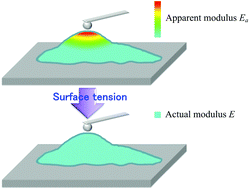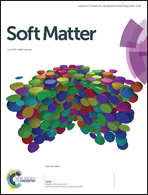Are elastic moduli of biological cells depth dependent or not? Another explanation using a contact mechanics model with surface tension
Abstract
Atomic force microscopy (AFM) has become the most commonly used tool to measure the mechanical properties of biological cells. In AFM indentation experiments, the Hertz and Sneddon models of contact mechanics are usually adopted to extract the elastic modulus by analyzing the load–indent depth curves for spherical and conical tips, respectively. However, the effects of surface tension, neglected in existing contact models, become more significant in indentation responses due to the lower elastic moduli of living cells. Here, we present two simple yet robust relations between load and indent depth considering surface tension effects for spherical and conical indentations, through dimensional analysis and finite element simulations. When the indent depth is smaller than the intrinsic length defined as the ratio of surface tension to elastic modulus, the elastic modulus obtained by classical contact mechanics theories would be overestimated. Contrary to the majority of reported results, we find that the elastic modulus of a cell could be independent of indent depths if surface tension is taken into account. Our model seems to be in agreement with experimental data available. A comprehensive comparison will be done in the future.



 Please wait while we load your content...
Please wait while we load your content...